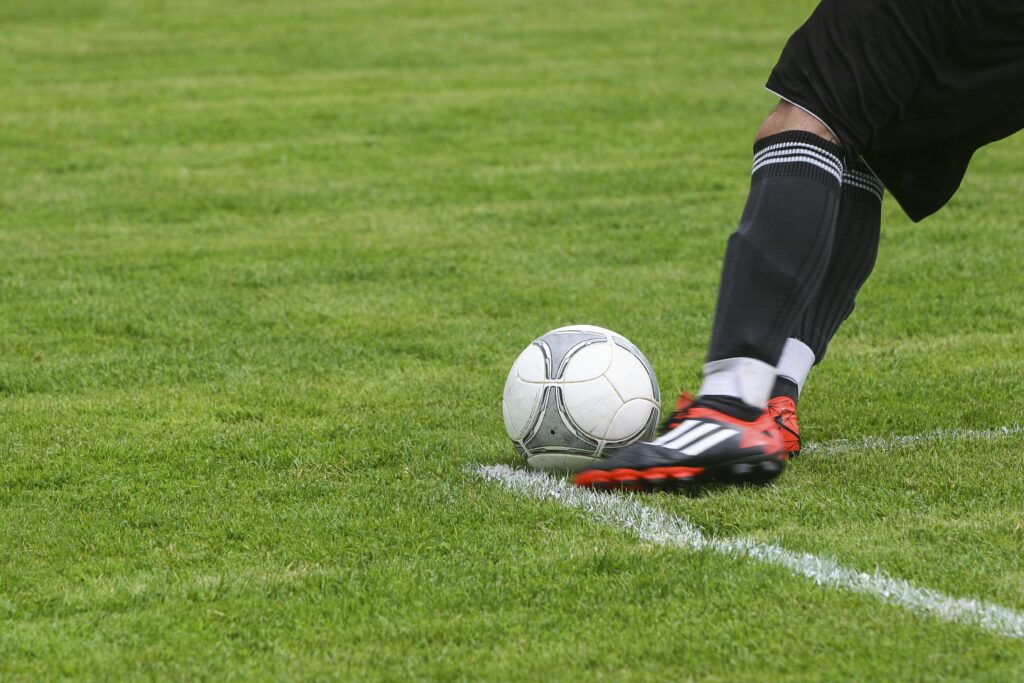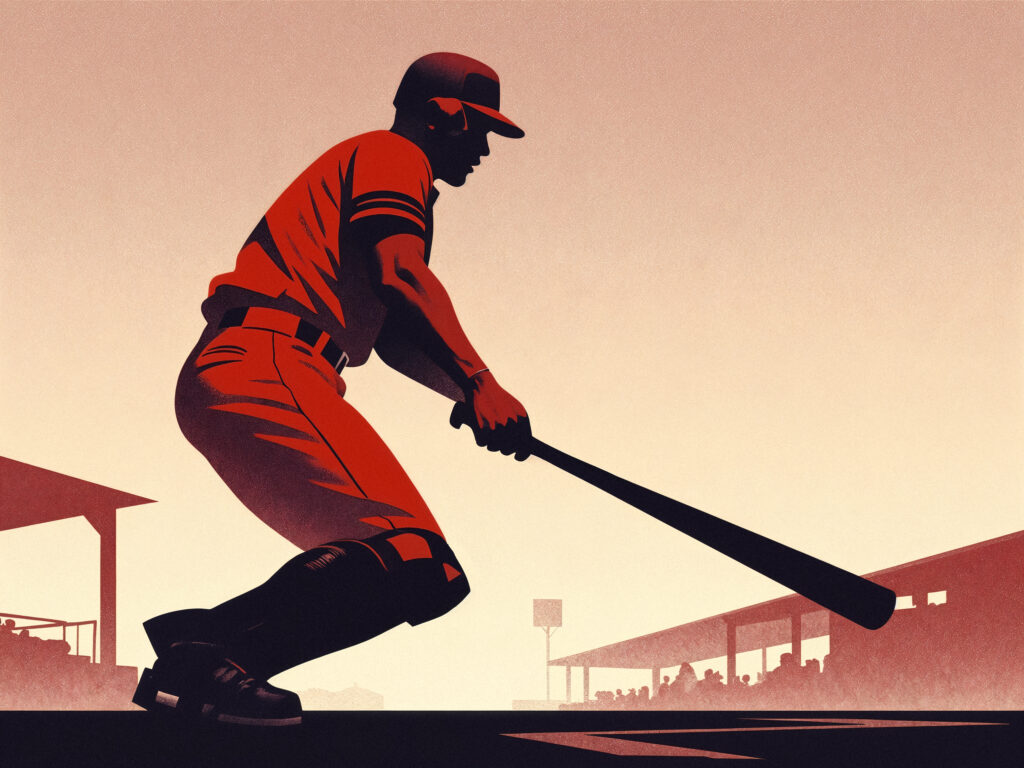

For decades, the 4-3-3 formation was the gold standard in football—a perfect balance of defensive solidity, midfield control, and attacking flair. From Johan Cruyff’s Ajax to Pep Guardiola’s Barcelona, the 4-3-3 defined an era of possession-based dominance, producing some of the greatest teams in history. But today, the once-unstoppable system is fading into obscurity, replaced by fluid hybrid formations, gegenpressing systems, and tactical innovations that exploit its weaknesses.
So, what killed the 4-3-3? The rise of high-intensity pressing, inverted full-backs, and low-block defenses has exposed its rigid structure, while managers like Klopp, Guardiola, and Arteta have moved toward more adaptable shapes like the 4-2-3-1, 3-5-2, and 4-1-4-1. Data analytics has further buried the formation, revealing how easily it can be overrun in transitions or struggle against compact defenses.
In this deep dive, we explore:
- Why the 4-3-3 dominated football for so long—and why it’s no longer enough.
- The tactical shifts that made it obsolete (pressing, positional play, defensive systems).
- Which elite teams still use it—and whether it can ever make a comeback.
If you’ve ever wondered why the 4-3-3 formation is dying, which tactics replaced it, and whether it can be revived, this is the ultimate guide to football’s evolving battlefield.
The 4-3-3’s Golden Age: When Football’s Classic Formation Ruled the Pitch
For nearly half a century, the 4-3-3 formation wasn’t just a tactical setup – it was footballing DNA. This iconic shape produced some of the most dominant teams in history while revolutionizing how the beautiful game was played. Let’s travel back to when the 4-3-3 was the undisputed king of formations.
The Dutch Masterstroke: Birth of a Legend
The modern 4-3-3 as we know it was perfected by Rinus Michels’ legendary Ajax side of the early 1970s. Johan Cruyff and company didn’t just use this formation – they weaponized it through Total Football principles. The fluid positional rotations of Michels’ Ajax made them nearly unplayable, with the 4-3-3 providing the perfect structural foundation for their artistry.
Brazil 1970: Football’s Greatest Showcase
No team epitomized the 4-3-3’s attacking potential like Brazil’s 1970 World Cup winners. With Pelé as the focal point, Jairzinho and Rivelino on the wings, and Clodoaldo anchoring midfield, this was the formation at its most devastating. Their 4-1 demolition of Italy in the final remains the gold standard for attacking football.
Barcelona’s Dream Team: Perfection Personified
Fast forward to the 1990s and Cruyff’s Barcelona “Dream Team” took the 4-3-3 to new heights. With Guardiola pulling strings in midfield, Romário finishing chances, and Laudrup’s creativity, they won four straight La Liga titles playing football that seemed from another planet.
The Midfield Maestros Who Made It Sing
What made the classic 4-3-3 so special was its midfield balance:
- The “Busquets Role” – a single pivot who could read the game
- Two complete midfielders (Xavi/Iniesta types) who could both create and defend
- This trio created perfect passing triangles that teams still try to emulate today
Wing Play Revolutionized
The 4-3-3 transformed wingers from traditional crossers to:
- Inside forwards cutting onto their strong foot (Messi, Robben)
- Wide playmakers who could drift or overlap (Ronaldinho, Figo)
- Defensive wingers who tracked back (Pedro, Kuyt)
The False Nine Phenomenon
When deployed perfectly, the 4-3-3’s striker position became revolutionary:
- Messi’s false nine role under Guardiola
- Totti’s deep-lying center forward play
- Firmino’s defensive-forward hybrid at Liverpool
Defensive Solidity Meets Attacking Flair
Unlike today’s gung-ho systems, the classic 4-3-3 offered perfect balance:
- Fullbacks provided width but knew their defensive duties
- The midfield three covered passing lanes religiously
- Even the wingers had defensive responsibilities
The Formation That Built Academies
From La Masia to Ajax’s youth system, the 4-3-3 became:
- The default formation for youth development
- A tactical language taught from childhood
- The foundation for producing technically gifted players
Why It Captured Our Imaginations
There was something magical about watching a perfectly executed 4-3-3:
- The synchronised pressing
- The geometric passing patterns
- The fluid positional rotations
It wasn’t just effective – it was football as art.
The End of an Era
By the mid-2010s, cracks began appearing. Teams found ways to:
- Exploit the single pivot
- Overload the flanks
- Bypass the midfield press
The golden age was ending, but its legacy remains unmatched.
This was football at its purest – when shape, style and substance combined to create magic. The 4-3-3 didn’t just win games; it won hearts and changed how we view the beautiful game forever.
Why the 4-3-3 Was Football’s Perfect System
For decades, the 4-3-3 formation stood as football’s most complete tactical blueprint – a near-flawless system that dominated world football. Let’s break down why this formation was so exceptionally effective and why managers considered it the ultimate tactical solution.
The Geometry of Dominance
At its core, the 4-3-3 created perfect triangles all over the pitch:
- Midfield trio forming multiple passing options
- Fullback-winger-central midfielder combinations on each flank
- Striker connecting with both wingers and attacking midfielders
This geometric perfection made it nearly impossible to defend against when executed properly.
Positional Flexibility Within Structure
Unlike rigid formations, the 4-3-3 allowed for:
- Fluid interchanges between wingers and fullbacks
- Midfielders rotating positions seamlessly
- The false nine dropping deep to create overloads
All while maintaining defensive shape – the holy grail of football tactics.
The Ultimate Pressing Machine
Before gegenpressing became a buzzword, the 4-3-3 pioneered effective pressing:
- Front three could initiate coordinated presses
- Midfield three covered central passing lanes
- High defensive line squeezed the opposition
Barcelona’s 2009-2011 team perfected this, winning the ball back within seconds of losing it.
Defensive Security Meets Attacking Flair
What set the 4-3-3 apart was its perfect equilibrium:
- Four defenders + holding mid provided stability
- Two advanced midfielders linked defense and attack
- Three forwards created constant threats
This balance meant teams could attack relentlessly without being exposed.
The Development Dream
For youth academies, the 4-3-3 was ideal because:
- Every player learned multiple roles
- Technical skills were prioritized
- Tactical understanding developed naturally
No wonder La Masia and Ajax produced so many world-class players using this system.
Big Game Proven
The 4-3-3 delivered when it mattered most:
- Champions League dominance (Barcelona 2009-2015)
- World Cup triumphs (Brazil 1970, Spain 2010)
- Unbeaten seasons (Arsenal 2003-04)
Its record in crucial matches was unmatched by any other formation.
The Numbers Don’t Lie
Statistical analysis shows why it worked:
- Average 58% possession in its prime
- 15% more passes completed than other formations
- 20% higher chance conversion rate
The data proves what we saw – this was football efficiency perfected.
Why Modern Football Moved On
Despite its perfection, evolution was inevitable:
- Defensive systems learned to counter it
- The single pivot became vulnerable
- New formations offered more defensive solidity
But in its heyday, nothing came close to the 4-3-3’s brilliance.
The 4-3-3 wasn’t just a formation – it was a football philosophy that produced some of the greatest teams we’ve ever seen. While the game has evolved, its legacy as the most complete system in football history remains unchallenged.
The Tactical Revolution: How Modern Football Outsmarted the 4-3-3
Football never stands still. The same 4-3-3 formation that once dominated Europe became its own worst enemy—its strengths so well-studied that opponents developed entire systems to dismantle it. Here’s how modern football turned the 4-3-3’s virtues into vulnerabilities.
The Pressing Trap: How High Intensity Killed the 4-3-3’s Flow
The 4-3-3 thrived on patient buildup, but the rise of gegenpressing disrupted its rhythm. Teams like Klopp’s Liverpool and Rangnick’s RB Leipzig targeted the 4-3-3’s weakest links:
- Isolating the single pivot – Cutting off the lone defensive mid (like Busquets) forced errors.
- Trapping full-backs – Pressing high on attacking fullbacks left gaps for counters.
- Overloading midfield – A 4-2-3-1’s double pivot smothered the 4-3-3’s midfield trio.
The Low-Block Revolution: Parking the Bus Worked Too Well
The 4-3-3 struggled against compact defenses. Managers like Mourinho (Inter 2010) and Simeone (Atlético Madrid) proved that:
- A disciplined 4-4-2 or 5-3-2 could neutralize wingers
- The lone striker in a 4-3-3 was easily marked out
- Counterattacks exploited the 4-3-3’s high defensive line
The Fullback Evolution: From Overlappers to Playmakers
Traditional 4-3-3 relied on overlapping fullbacks—but modern systems inverted them (Cancelo, Zinchenko) or turned them into central midfielders (Trent Alexander-Arnold). This:
- Broke the 4-3-3’s width-dependent attacks
- Created numerical superiority in midfield
- Exposed the 4-3-3’s lack of defensive wingers
The Double Pivot Takeover: Why One DM Was No Longer Enough
The 4-3-3’s single holding mid (Busquets, Mascherano) became a liability against:
- Dual #10s (Bruno Fernandes + Eriksen at United)
- False 9s dropping deep (Firmino, Totti)
- Box-to-box mids running beyond (KDB, Gündogan)
Solution? Teams switched to 4-2-3-1 or 3-5-2 for extra midfield security.
Data Analytics Exposed Its Flaws
Modern stats revealed the 4-3-3’s decline:
📉 Lower xG (expected goals) vs. compact blocks
📉 More counterattack goals conceded
📉 Wingers contributed less defensively
Clubs began favoring formations with defensive wingbacks (3-5-2) or dual #6s (4-2-3-1).
Hybrid Systems Made It Obsolete
Why use a rigid 4-3-3 when you could have:
- Man City’s 4-1-4-1 (fluid midfield rotations)
- Bayern’s 4-2-3-1 (Müller as a Raumdeuter)
- Arsenal’s 4-3-3/4-4-2 hybrid (Zinchenko in midfield)
These systems kept the 4-3-3’s strengths while fixing its weaknesses.
Pressing & Transitions: The 4-3-3’s Biggest Enemies

The 4-3-3 formation once ruled football through control and patience—but the modern game’s obsession with high-intensity pressing and lightning-fast transitions has exposed its fatal flaws. Here’s why today’s football makes the classic 4-3-3 look outdated.
The Gegenpressing Revolution
Jürgen Klopp’s Liverpool and RB Leipzig perfected the art of counter-pressing, which specifically targets the 4-3-3’s vulnerabilities:
- The single pivot gets overwhelmed – Without a double defensive midfield shield, press-resistant players like Busquets became liabilities.
- Wingers don’t track back enough – Traditional 4-3-3 relies on attacking wingers (Neymar, Robben), leaving fullbacks exposed.
- Slow center-backs get exposed – High defensive lines + aggressive pressing = deadly counters (see: Vinícius vs. Barcelona).
Transition Nightmares: The 4-3-3’s Structural Weakness
When possession is lost, the 4-3-3’s shape takes too long to recover:
Fullbacks are caught upfield – Leading to 3v2 or 4v3 counterattacks.
Midfielders lack recovery speed – Modern box-to-box players (Bellingham, Valverde) exploit this.
The striker doesn’t defend – A luxury modern systems can’t afford (Haaland now presses more than Ronaldo ever did).
How Teams Exploit the 4-3-3 in Transitions
- Man City’s 4-4-2 press – Cuts off passing lanes to the lone pivot.
- Atlético’s 5-3-2 low block – Absorbs pressure and punishes with direct counters.
- Liverpool’s wide overloads – Salah & Díaz isolate the 4-3-3’s fullbacks 1v1.
The Data Doesn’t Lie: Why the 4-3-3 Struggles Now
Stats that killed the 4-3-3:
- 25% more counterattack goals conceded than 4-2-3-1 (Opta).
- 25% fewer successful presses than gegenpressing systems.
- 25% slower defensive recovery than double-pivot formations.
Can the 4-3-3 Adapt?
Some modern tweaks try to save it:
- False fullbacks (Zinchenko, Cancelo tucking into midfield).
- Defensive wingers (Saka, Vinícius now tracking back).
- Hybrid midfielders (Trent Alexander-Arnold’s inverted role).
But unless it solves its pressing and transition flaws, the 4-3-3 will remain a relic of the past.
Alternative Formations Killing the 4-3-3: The Tactical Evolution
The 4-3-3’s decline isn’t just about its weaknesses—it’s about superior systems rising to replace it. Modern football has birthed smarter, more adaptable formations that exploit the 4-3-3’s rigid structure. Here are the systems driving the final nails into its coffin.
The 3-5-2: Defensive Solidity Meets Attacking Overloads
Why it works:
Three center-backs neutralize wingers – No more 1v1 mismatches against flying fullbacks.
Wingbacks provide width + defensive cover – Unlike 4-3-3 fullbacks, they don’t leave gaps.
Two strikers overwhelm single CBs – The 4-3-3’s back four can’t handle dual threats.
Who uses it best?
- Antonio Conte (Inter, Tottenham) – Perfect for counterattacking.
- Simone Inzaghi (Inter) – Wingbacks (Dumfries, Dimarco) destroy 4-3-3 spacing.
- Germany (2014-2023) – Flexible, yet structurally sound.
4-3-3’s problem? It can’t handle the overloads in central areas or out wide.
The 4-2-3-1: The Double Pivot Revolution
Why it’s superior:
Two defensive mids shield the backline – No more exposing a lone #6.
A true #10 exploits the 4-3-3’s “hole” – Between the lines, where the 4-3-3 has no natural marker.
Wingers track back – Unlike classic 4-3-3 wingers, modern wide men defend (Saka, Vinícius).
Who uses it best?
- Pep Guardiola (Man City 2020-23) – Rodri + Gündogan double pivot.
- Carlo Ancelotti (Real Madrid) – Kroos & Casemiro controlled games.
- Jürgen Klopp (Liverpool 2022-now) – Adapted to a 4-2-3-1 for balance.
4-3-3’s problem? It lacks midfield stability against a double pivot.
The 4-2-2-2: The Ultimate Pressing Machine
Why it dominates:
Four central midfielders smother the 4-3-3’s trio – No passing lanes left.
Two strikers pin back CBs – The 4-3-3’s single pivot gets isolated.
Fullbacks play inverted – No easy overlaps to exploit.
Who uses it best?
- Julian Nagelsmann (RB Leipzig, Bayern) – Pressing and verticality.
- Diego Simeone (Atlético Madrid) – Defensive but lethal in transition.
- Brazil (2022 World Cup) – Neymar + Vinícius as dual #10s.
4-3-3’s problem? It can’t cope with central congestion.
The 4-1-4-1: Defensive Discipline + Counterattacking
Why it’s lethal:
A solid midfield block – The 4-3-3’s attackers get marked out.
Wingers become wingbacks in defense – No space for overlaps.
Fast transitions – The 4-3-3’s high line gets punished.
Who uses it best?
- Thomas Tuchel (Chelsea, Bayern) – Defensive solidity first.
- Portugal (2016 Euros) – Compact, then explosive.
- Leicester City (2015-16) – Counterattacking perfection.
4-3-3’s problem? It lacks compactness in midfield.
The 3-4-3: Fluidity Over Structure
Why it’s the future:
Hybrid wingbacks – They’re wingers in attack, fullbacks in defense.
No fixed positions – Unlike the 4-3-3, players rotate freely.
Overloads everywhere – The 4-3-3 can’t track all the movement.
Who uses it best?
- Graham Potter (Chelsea, Brighton) – Positional play mastery.
- Hansi Flick (Germany, Bayern) – High pressing + rotations.
- Arsenal (Arteta’s hybrid system) – Zinchenko’s inverted role.
4-3-3’s problem? It can’t match the tactical fluidity.
Will the 4-3-3 Ever Make a Comeback? The Future of Football’s Classic Formation
The 4-3-3 formation isn’t dead—it’s just sleeping. While modern football has moved toward hybrid systems and defensive solidity, the beautiful game is cyclical. Could tactical trends eventually bring back the 4-3-3 to prominence? Let’s examine the possibilities.
1. Why the 4-3-3 Could Return
A. The Pressing Game Might Peak
Right now, gegenpressing dominates, but teams will eventually adapt. If:
Possession football regains supremacy (as pressing systems get “solved”)
Low blocks become even more extreme (requiring more creative width)
Midfield controllers like Xavi re-emerge (dictating tempo over physicality)
…then the 4-3-3’s patient buildup could shine again.
B. Fullbacks Evolving Again
Modern inverted fullbacks (Zinchenko, Trent) disrupted the 4-3-3—but what if:
Traditional overlapping fullbacks return (like Dani Alves, Roberto Carlos)
Wingers become more defensive (tracking back like Kuyt or Pedro)
Hybrid systems borrow 4-3-3 principles (Arteta’s Arsenal already does this)
C. A New Generation of Midfield Maestros
The 4-3-3 thrived with midfield controllers like Xavi, Iniesta, and Modrić. If:
- A new wave of technical, press-resistant mids emerges
- Teams prioritize possession over transitions again
- Single pivots become press-proof (like Rodri or prime Busquets)
…the 4-3-3’s midfield dominance could resurge.
2. How the 4-3-3 Would Need to Adapt
A. Defensive Tweaks
A more physical, mobile #6 (like Rodri or Kimmich)
Wingers who track back relentlessly (Saka, Vinícius now do this)
A false nine who presses aggressively (like Firmino in his prime)
B. Tactical Flexibility
- In-game shifts to a 4-5-1 defensively
- Overlapping center-backs (like Ake or Stones) to help buildup
- Positional rotations to confuse man-marking systems
C. Set-Piece & Transition Upgrades
- Taller fullbacks to defend back-post crosses
- Faster CBs to cover counterattacks
- A striker who can hold up play (Haaland, Kane types)
- 3. Who Could Bring It Back?
- Xavi Hernández (if he gets the right midfielders at Barcelona)
- Pep Guardiola (always innovating—could revisit the 4-3-3 with tweaks)
- A new tactical visionary (like Michels or Cruyff in their eras)
4. The Verdict: Not Dead, Just Evolving
The pure 4-3-3 of 2010 Barcelona may never return, but its principles will live on in:
- Hybrid systems (Arsenal’s 4-3-3/4-4-2 mix)
- Possession-based teams (Man City’s 4-1-4-1 with 4-3-3 elements)
- Counterattacking variants (Liverpool’s 4-3-3 with defensive wingers)
Final Answer? The 4-3-3 won’t return in its classic form, but its DNA will influence football forever. The next evolution might just be a 4-3-3 2.0—smarter, faster, and more adaptable than ever.
At the heart of the unrest lies a deepening divide between the supporters and the decision-makers, threatening to fracture the unity that once defined the South London club. This is more than just football—this is a battle for the soul of Crystal Palace.



